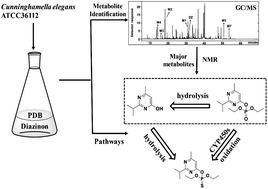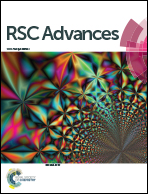Metabolism of insecticide diazinon by Cunninghamella elegans ATCC36112
Abstract
The fungal metabolism of diazinon was investigated and the microbial model (Cunninghamella elegans ATCC36112) could effectively degrade the organophosphorus pesticide (diazinon) mediated by cytochrome P450, which was mainly involved in oxidation and hydrolysis of phase I metabolism. Approximately 89% of diazinon was removed within 7 days and was not observed after 13 days with concomitant accumulation of eight metabolites. Structures of the metabolites were fully or tentatively identified with GC-MS and 1H, 13C NMR. The major metabolites of diazinon were diethyl (2-isopropyl-6-methylpyrimidin-4-yl) phosphate (diazoxon) and 2-isopropyl-6-methyl-4-pyrimidinol (pyrimidinol), and formation of minor metabolites was primarily the result of hydroxylation. To determine the responsible enzymes in diazinon metabolism, piperonyl butoxide and methimazole were treated, and the kinetic responses of diazinon and its metabolites by Cunninghamella elegans were measured. Results indirectly demonstrated that cytochrome P450 and flavin monooxygenase were involved in the metabolism of diazinon, but methimazole inhibited the metabolism less effectively. Based on the metabolic profiling, a possible metabolic pathway involved in phase I metabolism of diazinon was proposed, which would contribute to providing insight into understanding the toxicological effects of diazinon and the potential application of fungi on organophosphorus pesticides.



 Please wait while we load your content...
Please wait while we load your content...